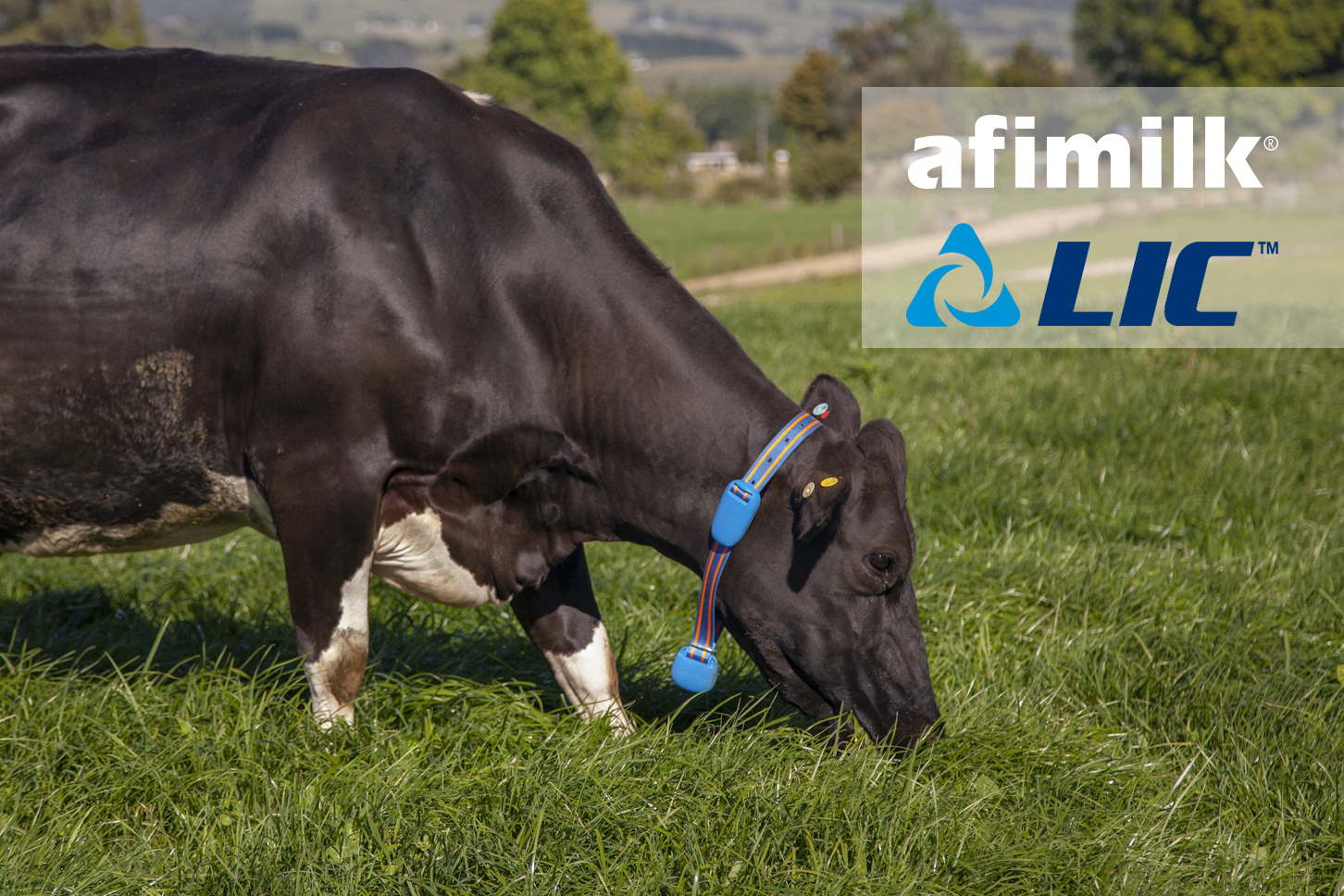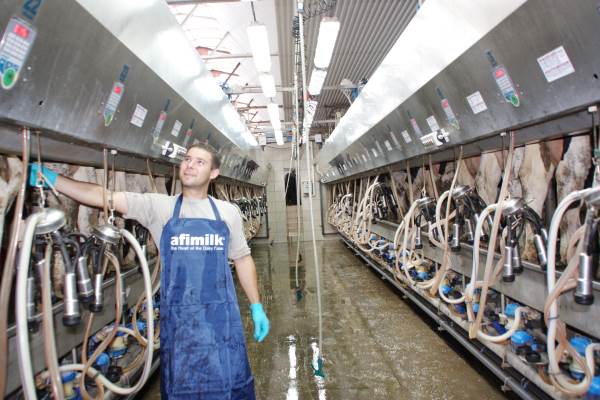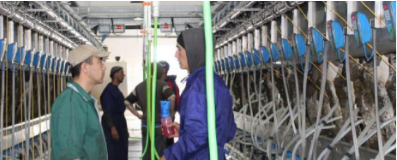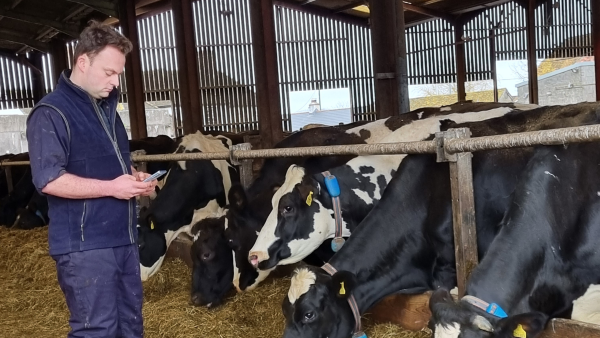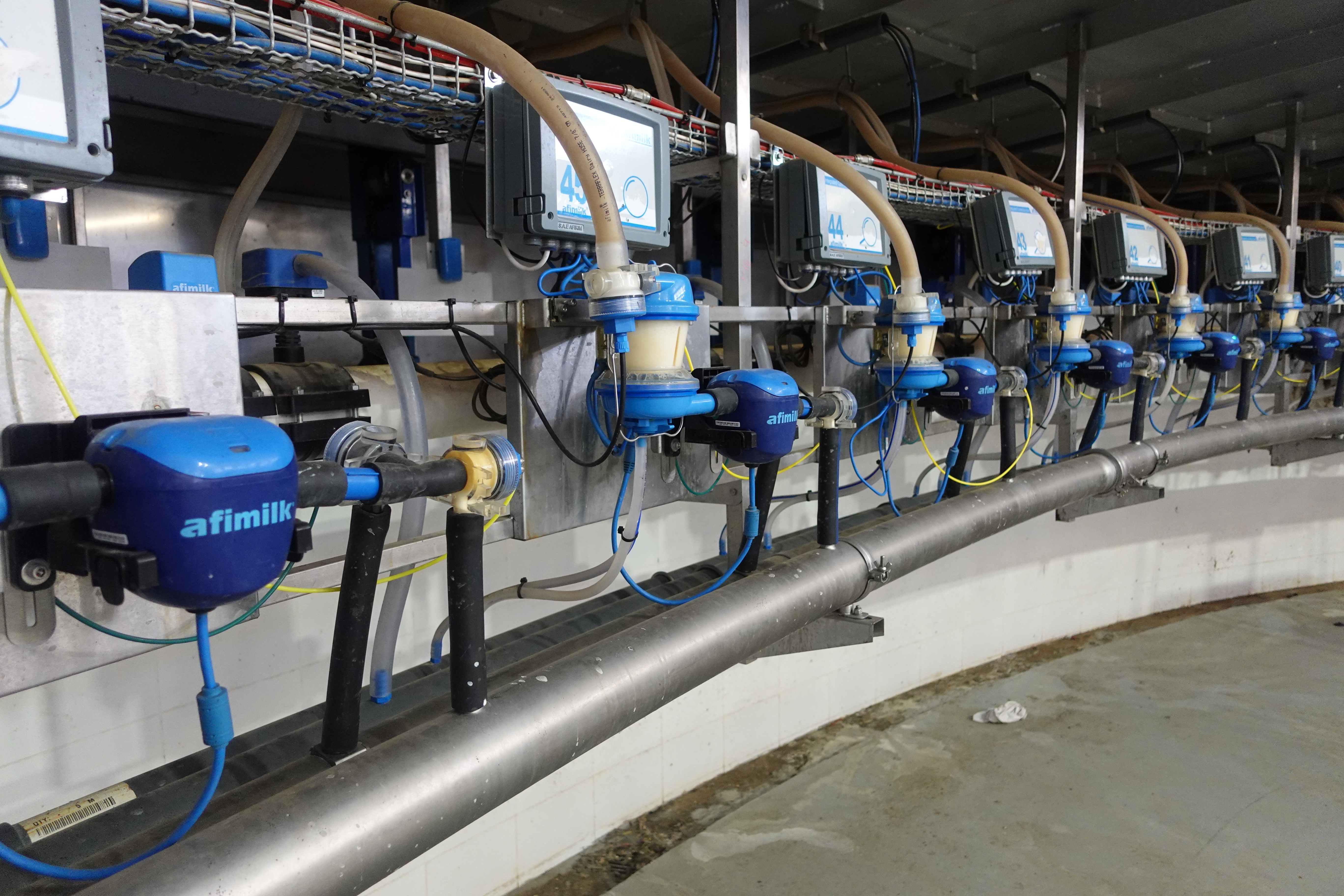In order to give your cows the quickest way to recovery from mastitis, it’s important to detect it early. In most cases, indications of mastitis have come from observing swelling or noticing some flakes in the cow’s milk.
Unfortunately, relying on clinical observation is not the most efficient method to detect mastitis, especially for large farms. New developments in technology have allowed for the creation of automatic mastitis detection in the milking parlour, all before any clinical signs become physically apparent. Naturally, the milk’s chemical properties change if the cow’s udder is damaged, primarily its salinity and lactose content, due to the high intracellular contents from the cells.
In order to measure the salinity of milk, electrical conductivity tests have to be performed to get a better idea of just how conducive the milk has become. More conducive milk is proof of mastitis, as the damaged cells release their content into the milk before the damage can be treated appropriately by the tissues.

While mastitis gets erroneously labelled as a bacterial infection, it’s important to note that it is the inflammation of the mammary tissue, and nothing further.
Let’s take the example of stubbing your toe against a table. Your toe will become inflamed as a result of the hit. However, it is not infected unless bacteria seeps in through exposed skin. This is exactly how it works with cow’s udders as well.
Considering the difference between an inflammation and an infection, we now get a clearer understanding about the perceived inefficiency of antibiotics by farmers. If there is an inflammation but no infection, there is nothing for the antibiotic to cure. Conductivity in the milk will increase in cases of inflammation without infection, due to its damage detection nature, and not its reaction to a bacterial presence.
We can deduce that the surge in conductivity found in Figure 1 (one day after calving) can be attributed to the vacuum applied to the udder after an exhaustive dry period. Since no infection exists, the effect is understandable. It’s normal to witness an increase in conductivity towards an adult cow’s last third of the lactation, unlike first-lactation cows who rarely show any upward or downward surge in conductivity through the entire process.
There is a pessimistic outlook towards using conductivity to diagnose mastitis, mainly due to certain flaws in previous studies, such as trying to find a threshold of conductivity to compare cows with mastitis to healthy cows. Not only that, but the contrast in different milking equipment and their dissimilar ways of reporting and measuring conductivity also played a role in the pessimistic outlook. Certain cases of elevated conductivity were also due to simple inflammation, with no infection found.
However, using the herd average’s conductivity as a benchmark proved to be a great indicator in the diagnosis of early mastitis, which resulted in a shorter healing time. By measuring conductivity at the herd level, we are able to identify a clear pattern in the lactation cycle. Interestingly enough, while the pattern was similar in most farms, there was a variation in actual levels of conductivity according to each individual farm. Evidently, the use of a single threshold on each and every cow through varying days and farms was not the most efficient way to use conductivity.
An Oregon university specialized in teaching dairy conducted a study using 60 Holstein and 60 Jersey cows. The study showed that both the Holstein and Jersey cows did not have much of a variation in patterns ( P = 0.637). The Jersey cows showed a 9.97 plus or minus 0.44 mOhm, while the Holsteins averaged a 9.96 plus or minus 0.32 mOhm.
Meanwhile, in a commercial 1,500-cow farm in Spain, a study was made after a mastitis diagnosis using conductivity thanks to Afimilk MPC milk meters as well as a milk sample sent to a reference laboratory for culture and somatic cell count. The study showed quite a bit of variation in the average conductivity, between 11.6 and 14.1 mOhms specifically.
Evidently, the limitations of using a conductivity threshold to diagnose mastitis had become apparent. Interestingly enough however, all the recorded cases showed a conductivity increase. The degree of deviation depended on the type of bacteria involved.

E. coli mastitis was responsible for the largest deviation in conductivity. The studies also helped establish that we can estimate whether the cause of the infection is the result of a gram-negative or a gram-positive bacterium. Another interesting observation while comparing conductivity with SCC was the presence of a lag time between the initial occurrence of the damage compared to the reaction of the cow to said damage. Understandably, there is a difference between taking once a month SCC samples as opposed to measuring conductivity in every cow through every milking on a daily basis.

Moreover, SCC levels may be elevated due to the increased lag time. The cow’s delayed reaction to the damage occurs at a time when the damage is practically already gone, indicating high SCC without increased conductivity.

We notice an example of this in the above figure. At the 140-day mark, chronic mastitis can be identified in the cow, whereas there was no increase in SCC until a hundred days later.
The lag of over 90 days is a crucial period that could be the difference between a cure or a chronic problem in many animals.
Furthermore, UK research has proven that an earlier diagnosis of mastitis through conductivity reduces the severity (alongside clinical signs) of mastitis while also significantly shortening the time of the milk returning into the tank by a whopping 50 percent. Unsurprisingly, this makes dealing with mastitis much more cost-effective.
In summation, this is one of the biggest deciding factors in choosing which method to diagnose mastitis. If the diagnosis is confirmed early on, then we have more time to take preventing measures and accelerate the speed of recovery, all while increasing efficient antimicrobial use.

